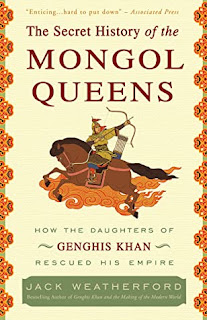Starless is a short fantasy novella by Evan S. Sullivan telling the story of Calan Castillon. It goes back and forth between his youth and ten years later when he is part of an invasion to another land. The other land, Cavadere, invaded their lands during his youth and Calan's father was killed during the war to repel the invaders. Now the kingdoms who were invaded have created their own great fleet and strike out to conquer the enemy who invaded them. Calan was sent to honour his family's alliance with another kingdom, and Calan is incredibly resentful that his family abandoned him like that.
I had a really hard time connecting with Calan. Some of the things that happened, particularly in his youth, seemed really weird to me (I'm not positive how old he was, but he was able to wander around his city freely without an escort around the age of 8 or 9, and he's the nephew of the king). He didn't seem to understand how alliances work even though the book said he had political training once he was a bit older. And he was kind of just generally sullen, unlikable, and not particularly useful in the events of the story (his commanding officer disliked him and I actually found myself agreeing with the commander because through the early parts of the story, Calan was mainly standing around and doing nothing - though I will concede that this part of the story took place on a boat, and Calan says he has had no experience on one before).
Starless is a fairly short read (about 110 pages). I mention this because it felt like the story actually started around page 70 or so. Most of the things that happened before that were backstory that wasn't particularly needed; with the story coming from Calan's perspective alone, we could have taken his word on what he was feeling towards everyone else, particularly in his family, without the events needing to be shown. Even the events that fueled his nightmares weren't particularly needed for the narrative itself.
I did find the ending of the book to be interesting though. I admit that I clued in on what was most likely going to happen around page 70, but was still curious to see how it all unfolded and why. Calan reminded me of Arthas from Warcraft III in many regards with what happened in Starless, though their stories are by no means the same.
I was also intrigued by many of the other characters surrounding Calan. His cousins seemed particularly interesting (the princess heir to the throne who can apparently best two grown men/knights with a sword, and her younger brother who just wants to be a musician, not a prince) and it was a shame that this story didn't show more of them. I also wish the differences between the kingdoms had been explored in more detail (why do the women of the South get to use swords when the women of the North don't?), although I do understand there wasn't space for such things within Calan's narrative. I am hopeful that more of these characters and cultural differences will be explored in Deathless, Sullivan's new novel that I believe is set in the same world as Starless.
I'd also like to mention that the list of characters really came in handy when I started reading Starless, particularly in terms of the Castillon family (the king, his son, and his brother all have names starting with "R," so it took a bit to figure out who was who). I do wish there had been a map though to show the different kingdoms, particularly while trying to follow the events of the war. I firmly believe that fantasy books should all have maps to help the reader follow along.


